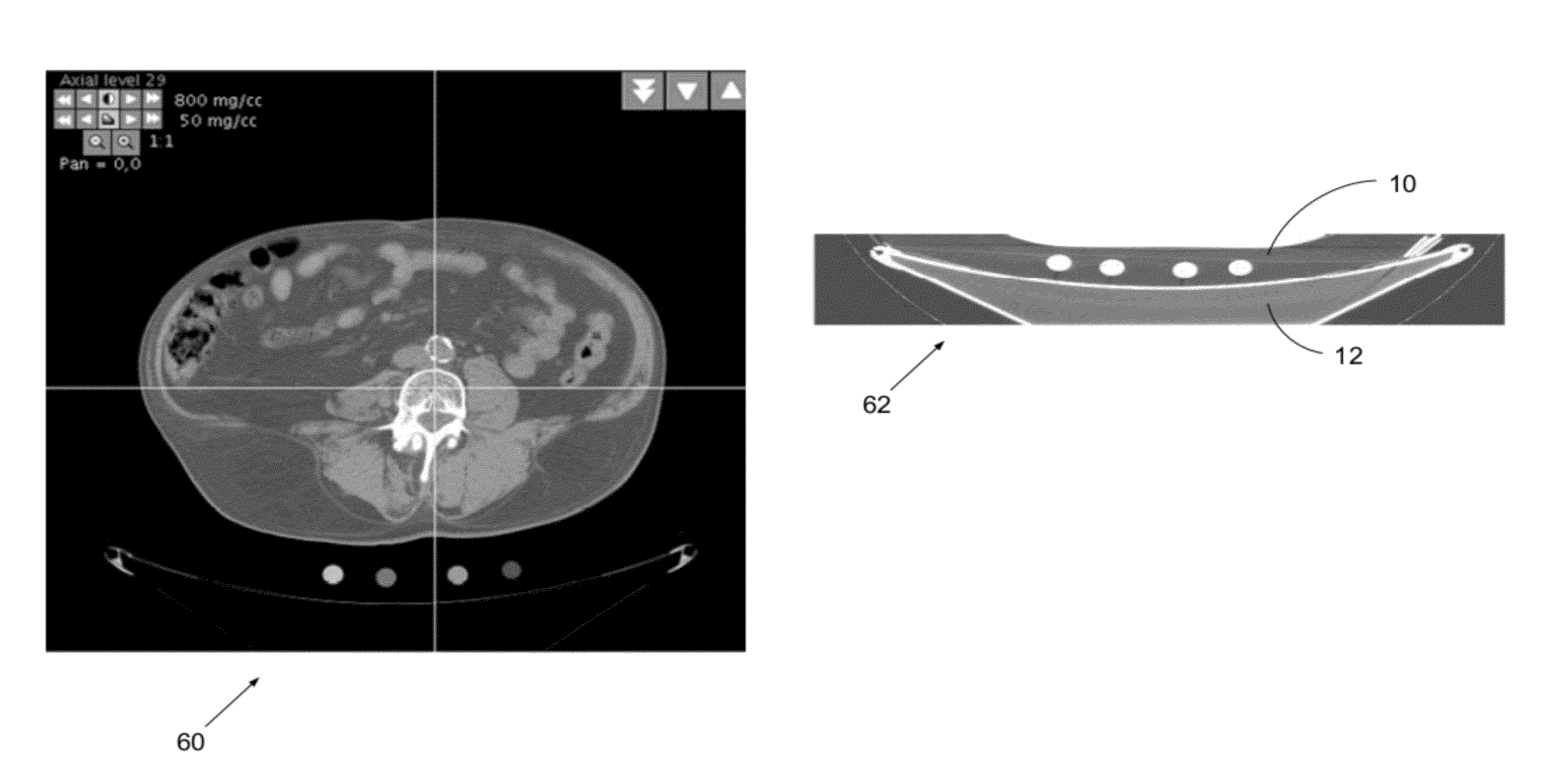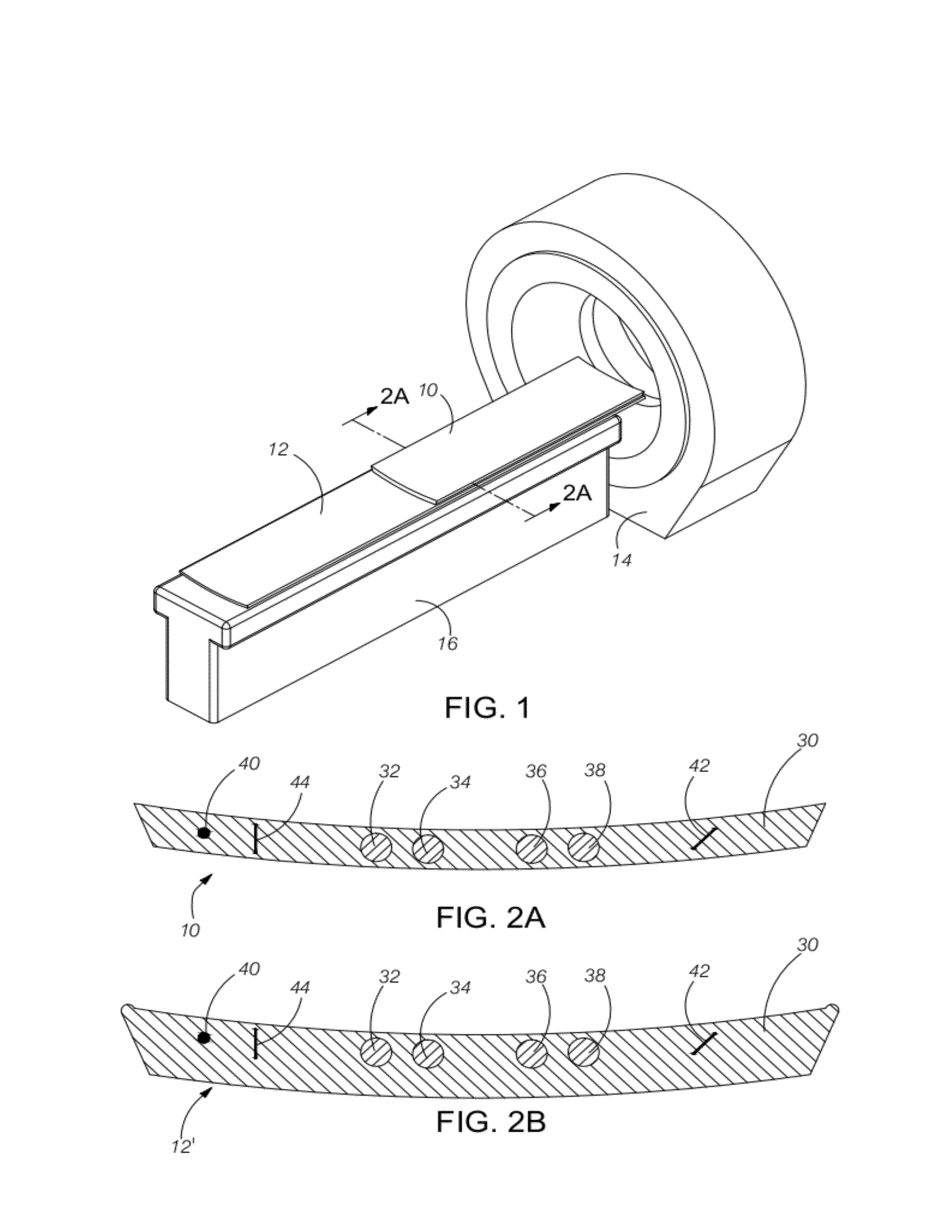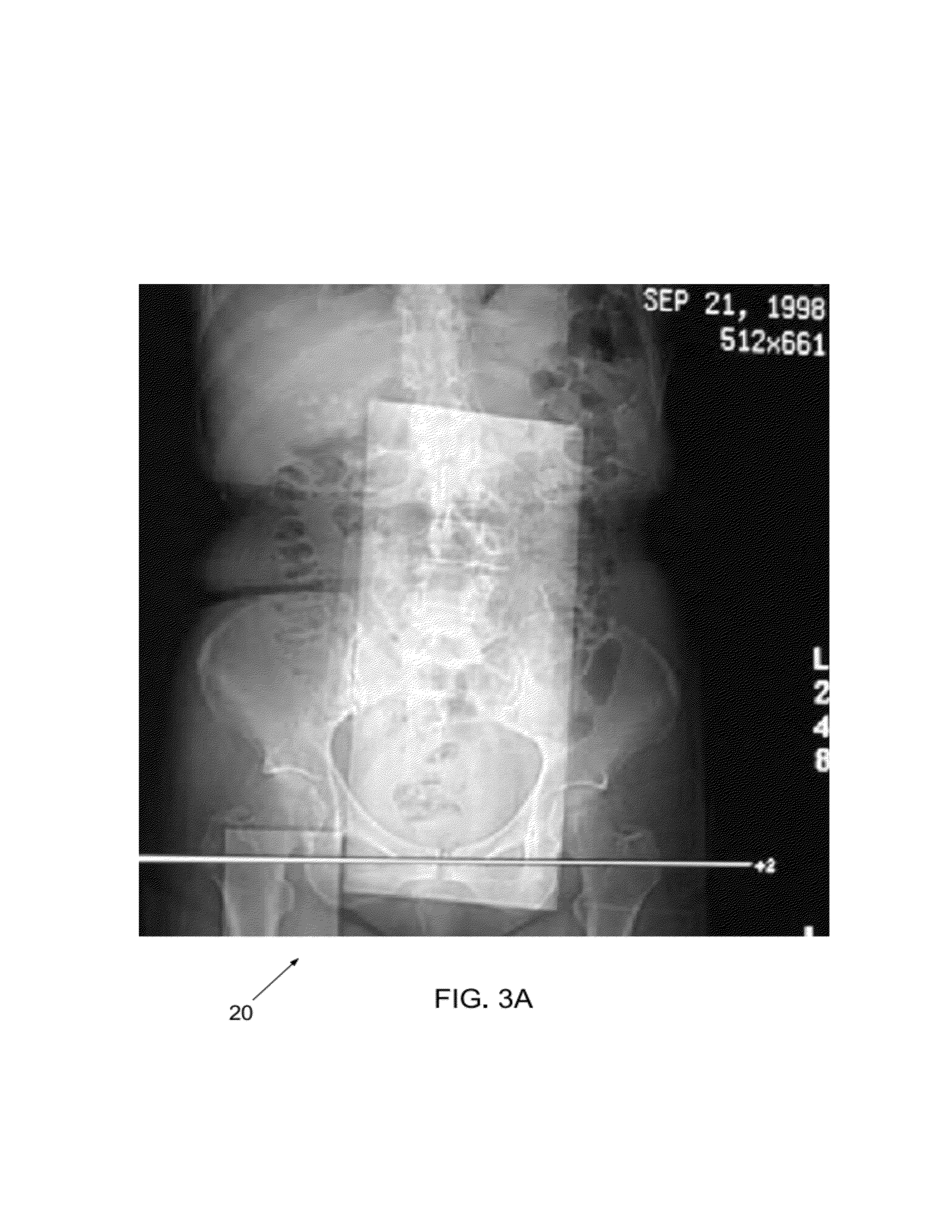Extended and fixed INTable simultaneously imaged calibration and correction methods and references for 3-D imaging devices
a 3-d imaging and calibration method technology, applied in the field of 3d volumetric medical imaging, can solve the problems of inefficient process, large quantity of quantitative measurements, and inability to accurately measure objects, so as to minimize patient movement, avoid image artifacts, and reduce the size of cross-sectional area
- Summary
- Abstract
- Description
- Claims
- Application Information
AI Technical Summary
Benefits of technology
Problems solved by technology
Method used
Image
Examples
Embodiment Construction
[0039]An important determination of the present disclosure is that the energy X-ray attenuation response (slope of the regression calibration equation) can be measured independently from the intercept of the regression calibration equation (i.e., the bias component). An additional determination of this discloser is that the slope is relatively independent of the sample size and surrounding material. The hybrid calibration method in combination with the disclosed device and methods has been shown to be superior to the use of external phantoms only and particularly so when large and dense phantoms are used.
[0040]Another important determination of the present disclosure is that Z-axis integration of pixels in the small cross-sectional samples can be used preferably to phantoms with large samples and single slices. Practical use of the presently disclosed device incorporates innovative software methods which automatically detect and measure the small samples, which also may move somewha...
PUM
 Login to View More
Login to View More Abstract
Description
Claims
Application Information
 Login to View More
Login to View More - R&D
- Intellectual Property
- Life Sciences
- Materials
- Tech Scout
- Unparalleled Data Quality
- Higher Quality Content
- 60% Fewer Hallucinations
Browse by: Latest US Patents, China's latest patents, Technical Efficacy Thesaurus, Application Domain, Technology Topic, Popular Technical Reports.
© 2025 PatSnap. All rights reserved.Legal|Privacy policy|Modern Slavery Act Transparency Statement|Sitemap|About US| Contact US: help@patsnap.com



